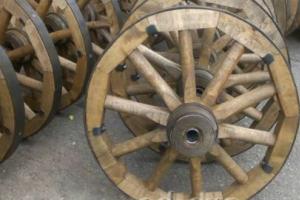orange blossom belongs to the Rutaceae family. How wild plant flower growers are unknown. As for the homeland of origin, most scientists are inclined to South China. The main growing areas are the Mediterranean, Central and South America, South Africa, East Asia, Australia. In Russia, the more well-known and frequently used name is “orange”, which comes from German, which means “Chinese apple”.
orange blossom belongs to the evergreen tree, some species have spines. At home it can reach 2-2.5 meters. The leaves are dark green in color, rounded at the base and with a pointed apex, oval-elongated in shape. Has 2-3 growth periods. The leaves of the plant live for about 3 years. orange blossom bisexual, white, 5-petalled, located in the axils in tassels or singly. In the crown of an orange tree, fruits form on the shoots of the passing year. The main crop is harvested from branches of 4-6 orders. Unlike lemon orange blossom more light-loving and heat-loving. When forming fruits, it especially needs a bright location.
Orange fruits are spherical in shape, have a dessert taste, thick orange peel and fragrant, juicy sweet and sour pulp. Orange fruits contain sugars lemon acid, vitamins, pectin and nitrogenous substances, fiber, carbohydrates, phytoncides, minerals (potassium, calcium, phosphorus), and essential oils in the peel of the fruit. Orange seedlings are used as rootstock for lemons. Oranges do not have a clearly defined dormant period; therefore, they simultaneously grow, bloom and bear fruit throughout the year. Like lemons, they have 2-3 growth periods throughout the summer. 
All orange varieties grown in the world are differentiated by the color of the fruit (yellow, red), as well as by the speed of fruit ripening (early, mid-early, late). The following varieties are most suitable for home culture: Gamlin, Korolek, Pavlovsky, Washington-Navel. The last two are especially common. Washington-Navel refers to early ripening variety with oval or spherical fruits with orange-yellow or orange-red smooth or rough skin and orange pulp. This variety propagates well from cuttings. Plants grown from cuttings bear fruit the following year.
Compared to other citrus fruits, orange is more light-loving; it is better to place it near a south window. The plant can overwinter in a room, but it is better to let it rest at a temperature of 6-8 °C. Orange does not withstand excessive soil moisture and requires regular watering. In summer, you need to water abundantly, but do not allow water to stagnate; in winter, watering is limited, especially if the plant overwinters at low temperatures.
At a temperature of approximately 0 °C, when plants are at rest, they tolerate almost complete shading for 3-4 months without any damage. Such significant shade tolerance of oranges in winter time helps to successfully breed them in rooms. orange blossom has main pests: aphids and scale insects.
There are many lovers of exotic fruits. By the way, it’s hard to call an orange such, it can be bought so freely throughout the country. But you can grow an orange tree and take care of it at home. To do this, it is not necessary to purchase seed material; it is enough to use seeds from the fruit you eat. How to care for an orange and form a healthy indoor plant a year after planting, read below.
In order to ensure the cultivation of oranges at home, you must first take care of good fruit-bearing soil. Buy flower soil mixture. If you wish, you can simply bring land from summer cottage. But remember: in this case it is recommended to add good fertilizers. To begin with, it is better to use humus.
Another significant point: be sure to treat the soil with boiling water before using it directly. An orange tree will take root well at home if you properly plant it or germinate it from grain, and also provide everything the necessary conditions content. These include lighting, watering features, as well as temperature regime. Let's dwell on these points in more detail.
Lighting
Caring for an orange tree will be complete if you choose the appropriate lighting intensity for it and, in general, put it in right place. Homemade orange cannot do without sunlight. The natural environment for this plant is the tropics, so moisture and lighting are the most important points in the process of creating a favorable microclimate.
Don’t be afraid to place a flowerpot with a tree near the window: straight Sun rays- this is exactly what he needs. But this is if we are talking about a mature representative of indoor greenery. The young specimen is too sensitive to open and too bright lighting. Try to accustom him to these conditions gradually.
As you can see, age is very important. To begin with, it is better to place the plant in partial shade, and then for some time place the flower pot in a brightly lit place. Or use some kind of shelter if you don’t want to move the flowerpot back and forth.
Temperature
Anyone can grow an orange at home. But for this purpose create favorable conditions development. Temperature is of great importance. Optimal performance For indoor orange– 27–28 degrees. Fruit bearing citrus Do not leave it in a draft. Otherwise, it may lose its aesthetic appearance, become frail, and also excessively painful. At the same time, do not forget about the need to ventilate the room in which the tree grows.
Humidity
Orange Blooming tree will develop fully provided that the soil does not dry out. Of course, it is undesirable to over-fill the plant with water, but the earthen lump should not become covered with a dry crust. Another important point: in winter, the temperature is approximately 10–18 degrees, so the intensity and frequency of watering is reduced. The optimal approach is to irrigate the substrate once a week or no more than twice a month.
Fertilizers and watering
Watering and spraying conditions in summer are somewhat different from winter. Because the room temperature in an apartment it will be much higher; indoor orange will also have to be watered many times. In addition, you need to spray the plant more often. Another thing is in winter: it is not recommended to spray the foliage at all, otherwise it will begin to rot.
It is necessary to fertilize the orange, and this is done approximately once every two weeks. Use as a nutritional mixture complex fertilizer for citrus fruits. But this applies to the spring-summer period, when the plant is actively increasing its vegetative mass. Already from the beginning of October, feeding should be stopped altogether, because the orange is in a state of suspended animation.
Features of grafting
How many years does an orange live at home is a question that interests many. Provided that you can properly care for it, the life of the plant will last approximately 75 years. But this requires a lot of effort. Grafting is another important component of citrus fruit care. This process is carried out in two possible ways:
- classic (an ordinary seedling is taken as a rootstock);
- budding (a plant bud must be implanted into wood).
They know firsthand how to make homemade oranges bear fruit. experienced flower growers. In this case, you cannot do without vaccination.
Tree pruning
You can provide complete care for your orange tree if you study each of the stages. A properly pruned plant is the key successful cultivation V room conditions. This procedure should be carried out in the spring, before the plant begins to actively grow. Be sure to take the time to prune your orange, otherwise it will not bloom in time and may not form fruit.
Protection from diseases and pests
Video “Caring for an indoor orange”
In this video you will learn how to water, plant and care for an orange tree at home.
Orange tree - citrus evergreen perennial family Rutaceae, grown in subtropical climates and does not tolerate negative temperatures. The growth of the orange tree in warm climates continues constantly; the plant is medium-sized and can grow up to 7 m in height at open cultivation. There are also low-growing varieties up to 3 m. Thermophilia and low demands on conditions allow you to successfully grow oranges at home. Orange tree at home at good care will be able to bear fruit and reach a decent size.
Many domesticated, specially bred varieties of orange can bear fruit all year and have minimum size crowns These varieties (for example: Washington Navel, Korolek, Gamlin) allow you to regularly obtain a small harvest of oranges at home. And three or four plants can create the feeling of a citrus garden in a room.
Planting an orange at home.
Orange trees are propagated in two ways: cuttings and seeds. Both methods have their pros and cons. Firstly planting material need to find it somewhere. With seeds, everything is simple - go to the store and choose the first fruit you like. As with growing avocados at home, the orange fruit must be ripe and uniform orange. Almost all orange fruits contain seeds suitable for germination. You need to get cuttings somewhere: ask a friend who already owns a homemade orange, you can buy a ready-grown seedling in a store, or, for example, bring a cutting from a vacation in the subtropics, cutting off a twig of an orange growing in open ground.
An orange planted at home from seed is a stronger plant. It will grow better and adapt to new conditions, be more unpretentious to diseases, the tree will acquire a beautiful crown, which cannot be said about plants planted from cuttings. However, you need to keep in mind that an orange grown from a seed will have slightly different biological characteristics than its parent. Planting by cuttings ensures 100% transfer of the genetic material of the parent tree. And the last thing that may influence the choice of how to plant oranges at home is the beginning of fruiting. A tree from a seed will begin to bloom and bear fruit with sufficient care at the age of 8-10 years; the cutting method of propagation reduces this period by half.
Growing an orange tree from seed.
Take the formed seeds from the orange fruit correct form. To guarantee, use several pieces from different fruits so as not to sow only unpollinated or immature seeds. Plant immediately after removing the seeds, in small pots or long boxes at intervals of 5 cm from each other and 3 cm from the walls. For soil, use a mixture of peat and flower earth in a 1:1 ratio, with good drainage.
Deepen the seeds by 1 cm and maintain constant soil moisture, avoiding overwatering. Optimal temperature for germination 18-22 degrees. Orange sprouts at home will appear in about 2 weeks. From the hatched oranges, select the strongest, most powerful, with the right leaves. Carry out growing under a small glass jar- to create a microclimate. Place the pots in a bright place, but out of direct sunlight. Once a day, remove the jar for half an hour to refresh the atmosphere around the orange.
After two true leaves appear, transplant healthy specimens into separate pots with a diameter of 10 cm and provide good drainage. When replanting, try to keep the roots and the peat mixture around them intact. For soil, use a substrate of humus and flower soil. In this pot, the orange should grow to 15-20 cm, then the next transplant will be needed.
Propagation of orange tree by cuttings.
For cuttings, choose stems with a diameter of 4-5 mm and a length of about 10 cm. The cut should be made under the bud from below, and above the bud from above. On the cutting you need to leave 3-4 live buds and 2-3 leaves. For greater effect, the cuttings should be treated with a root growth stimulator and placed 1/2 of the length in water for 3 days. For rooting cuttings homemade orange plant them in boxes or pots with soil consisting of a mixture of humus, coarse sand and flower soil in equal parts. Plant the cuttings in a compacted substrate to a depth of 3-4 cm. Initially, the branch has no roots, this does not allow the plant to receive enough moisture from the soil, so the orange tree requires daily spraying of the leaves with water. The soil should be well moistened, but do not allow it to become sour. The optimal temperature for rooting is 20-25 degrees. Final rooting occurs after 30-45 days. Then the home orange tree can be transplanted into a separate small pot.
Growing conditions and care for homemade orange.
To grow an orange tree at home, you must use soil that has a good supply of nutrients. For these purposes, a flower mixture that can be purchased in stores, or soil from your summer cottage treated with boiling water and enriched with humus, is suitable. Be sure to line the bottom of the dish with drainage made of expanded clay or charcoal. When watering, do not allow water to stagnate and the soil to rot. At the same time, you need to ensure that the entire earthen ball is moistened, otherwise the tree will begin to lose roots and get sick. Watering is required approximately twice a week. The soil must be allowed to become completely saturated with moisture, and then it must dry out. When the soil becomes sour, it needs to be replaced. The recommended container for growing orange is a clay pot. It is quite moisture permeable and this property helps regulate soil moisture; clay absorbs and evaporates excess water through the outer surface.
Orange loves light, so a grown tree requires direct sunlight but not more than 2 hours a day. Orange at home does not like to be moved to a new place, so you need to find it from the very beginning permanent place For home tree in a southern bright room. To form a beautiful crown, you can turn the orange pot, but every day at a small angle so that the plant has time to turn around. Every year, as the home orange grows in size, it needs to be transplanted into a larger pot. The new dishes should be slightly larger than the previous one by 3-4 cm in diameter. When replanting, the earthen ball with roots should be removed with minimal damage and moved to a larger pot, and the difference should be filled with fresh soil. A pot of 8-10 liters in volume can be left as a permanent one, and transplants can be replaced with fertilizing, but you need to update it at least twice a year upper layer soil.
Comfortable temperature for growing oranges: 17-28 degrees. Orange like any other houseplants does not tolerate drafts. Homemade orange needs spraying with water several times a week to maintain optimal humidity. IN heating season daily spraying is required.
To give an aesthetic appearance orange at home it is necessary to take an active part in the formation of the crown. In the first year of life, the tree produces a single shoot up to 30 cm high. In the second year, before active growth- in the spring, you need to cut off the top of the shoot with pruners or scissors, leaving only about 20 cm. This will force the tree to release lateral buds. Next, remove the lower buds, leaving only the 3 upper ones. These should form the skeletal main branches of the crown of a homemade orange. Next year, perform similar manipulations with second-order lateral branches, stimulating branching. Often, pruning the central shoot of an orange does not give the desired result; the tree produces a single new sprout from the top, then you need to cut the shoot again along with the top bud, and if the length allows, then the second one. An orange tree acquires a nice appearance when its branches develop to level 5-6. In the future, it will be enough to trim individual fast-growing shoots or remove them altogether.
With careful care, an orange grown at home will bloom in a few years. To form ovaries, use a cotton swab to move pollen from the anther to the sticky stamen. If quite a lot of fruits are produced, some will need to be removed, otherwise the tree may die from exhaustion. For normal growth, one fruit should correspond to 10-15 leaves. Try to grow your homemade decorative Pink Banana from seeds and get it to bear fruit.
Tell your friends about it.
Growing an orange tree at home is quite difficult. An inexperienced gardener is unlikely to cope with such a task, especially if his goal is to obtain a fruit-bearing plant. However, with some effort and taking into account the recommendations given in this article, it is quite possible to achieve success. If you have never “welcome” citrus fruits into your home, try first using a store-bought orange tree. If the experiment is successful, you can begin trying to enrich your garden with a plant grown from a seed.
What kind of orange is grown at home?
Of the citrus fruits intended specifically for indoor growing, three are especially popular:
- Pavlovsk orange. He is not tall - a meter maximum. Quite fruitful; additional specimens can be obtained by ordinary cuttings. However, the fruits take a long time to ripen, up to nine months, during which the tree requires increased attention and careful care.
- Gamlin. It will be taller - up to one and a half meters. The fruits are juicy, sweet and sour, and contain few seeds. The harvest should be expected late in the fall.
- Washington Navel. The most favorite orange tree among home gardeners. Can grow up to two meters; below one mature plant can not be. An additional bonus is that it smells charming during flowering, and the hair can bear fruit from the age of three. The fruits are quite large, up to a third of a kilogram.
It is advised not to buy a fruit-bearing orange tree: if you change your residence, it may stop bearing fruit for a couple of years. Let it agree to “feed” you when it settles in.

How to choose the right place
In order for your home orange tree to agree to stay with you, you must first place it in a place that fully meets the needs of the plant. You need light - plenty, but not too bright. The east and south sides are suitable if the tree does not stand close to the window. You can determine the required distance by the condition of the leaves. If the leaves begin to stretch and corrugate, you need to move them closer without waiting for them to fall. If they start to turn yellow, you should move them a little further (although this rarely happens). Additional care should be to periodically rotate the pot so that the orange tree is exposed to the light on different sides, and the crown is formed harmoniously. And in the summer it would be nice to take it out into the garden or onto the balcony.
Temperature
You also need to be careful with heat. If the temperature drops below 5 degrees, the orange tree may die. At high levels (25 and above), it will begin to grow actively, but will not even think about bearing fruit. It is advisable to maintain it in the range of 15-18 degrees. If the ovaries have already appeared, vigilance can be relaxed, just do not allow them to dry out. The southern tree will cope on its own.

Careful watering
In principle, the orange tree (photo) loves water. So in hot weather you need to water and spray it daily. Water for these purposes must not only be settled, but also warm. However, heating it is not recommended. It is better to place it next to the pot ahead of time so that it is at air temperature at the time of watering. When it gets cold and in winter, spraying stops, and watering is done every other day or two. With the volume of water it’s like this: let less rather than more. The leaves that have curled from water starvation will straighten out, but the roots that have rotted from stagnant water cannot be saved.
A beautiful crown is not only for aesthetics
Since you have already understood the basic rules of how to grow an orange tree, now you need to figure out how to get it to bear fruit. And for this, the plant must have a formed crown suitable for reproduction. If you don’t do this, you can get a harvest only in a decade. Branches of the fifth order bear fruit. Therefore, in the spring, branches longer than 10 centimeters are pinched and the lower leaves are torn off. This way you will get a branched tree with a uniform crown.

Such manipulations are carried out in the spring. Actions should be performed above the kidney, so that it is outside. Special attention is given to shoots that are weakened, very elongated and growing inside the crown. And if the orange tree has grown greatly, above a third of a meter, with weak development of the side branches, the top is also mercilessly pruned.
Transfer
The rule of replanting indoor plants annually does not apply to an orange tree. It should be relocated about once every three years. Young specimens can be replanted after two, but not more often. This is done by transshipment without chopping off the roots. Particular attention is paid to drainage - its layer should be thick enough. And the movement must occur before the orange tree (photo) blooms. Moreover, this process is unacceptable when it is already “feeding” the fruits.
Stimulation of fruiting
In order for an orange tree at home to bring you a harvest, you will have to devote extra time to it. Without care on your part, its fruits will be small and bitter. There are two ways to improve their quality:

- graft. If there is another tree that has already produced fruit, small identical pieces are carefully cut out from the bark of both and exchange places. To prevent the damaged area from rotting, it is wrapped in cellophane. The operation is quite dangerous for plants. If you are afraid of not being able to cope, call a professional for help;
- wintering in extreme conditions. Fruiting will begin somewhat later than with grafting, but much faster than without it. The orange tree is taken out into the cold (not excessively, so as not to freeze), and watering and fertilizing are stopped. In such harsh circumstances, it must withstand at least a month. In the spring he is again surrounded by care. Already in the third year after hardening it will produce flowers.
If the capricious one nevertheless deigns to bloom, it can be pollinated - with an ordinary brush. However, if there are a lot of flowers and the extra ones are plucked, then the fruits will appear without pollination.

The bone will come in handy!
If you are suspicious of the specimens offered in flower shops, you can try growing an orange tree from a seed. To do this, you should go to the nearest supermarket and buy a ripe, richly colored fruit. Its seeds cannot be stored after eating; they must be planted immediately. A clay pot is taken for the future tree. Since it is not a fact that the selected seed will sprout, several should be placed in the container at once. In case of increased success, the trees can be planted into separate “apartments” later. The soil is purchased specially for citrus fruits - or it is assembled independently, from medium-sized sand, humus, leaf soil and turf - it is taken in three parts, all other components one at a time. The seed from which an orange tree should grow is immersed in the soil about two centimeters, after which the surface is sprayed with water, and the pot is covered with glass or wrapped in polyethylene. For a week, the container is placed in darkness and warmth, and then moved to the windowsill (again, warm). Until the sprouts appear, the shelter is not removed.
Botanical name: orange tree (Citrus sinensis) – species fruit trees, belonging to the genus citrus of the orange subfamily of the rutaceae family. Cultivated for a long time, the fruits of the tree, oranges, are widely known and considered one of the healthiest and most delicious fruits.
Homeland of orange: China.
Lighting: photophilous.
The soil: light, loose, with a neutral reaction
Watering: abundant during the growth period, limited during the dormant period.
Maximum tree height: up to 12 m.
Average lifespan of a tree: 75 years old.
Landing: propagated by cuttings, seeds, grafting.
Description of orange
Orange is cultivated plant and is not found in the wild. This is a hybrid form obtained in ancient times by crossing citrus species such as tangerine (Citrus reticulata) and pomelo (Citrus maxima)
The orange tree (see photo below) is evergreen, with a compact dense crown; the branches and young shoots have fairly large thorns or thorns. Dimensions greatly depend on the variety; tall forms can reach 12 m when grafted onto dwarf rootstocks– 4-6 m, and those grown as indoor plants do not exceed 2-2.5 m. There are even more compact varieties created specifically for indoors and having a height of only 60-80 cm.
The orange root system is superficial and has a number of features that must be taken into account when cultivating it. So, unlike other fruit trees, the roots of an orange do not have root hairs, through which moisture and nutrients are usually absorbed; instead, at the tips of the roots there are caps with colonies of soil fungi that exist in symbiosis with the plant.
Mushrooms receive from it carbohydrates and amino acids, other substances necessary for their life activity, and in return they convert water and mineral compounds, primarily phosphorus, into a form accessible to the tree for absorption.
This community, called mycorrhiza, helps to increase crop productivity; the growing mycelium increases the absorbent surface of the roots, but, on the other hand, makes the host plant more vulnerable, since mycorrhiza does not tolerate the lack of water, low soil temperature, and especially suffers when the roots are exposed.
In this regard, trees when grown in open ground often require artificial irrigation and do not tolerate transplantation with an open root system very well.
Orange leaves in the photo with description
Orange leaves are dark green, leathery, pointed oval in shape, their size is approximately 10x15 cm. They have a solid wavy or jagged edge and petioles with small winged appendages, connected to the petioles through a fairly wide intermediate joint. Inside the leaf plates there are glands filled aromatic oil, the smell of which is similar to that of orange blossoms. The lifespan of one leaf is about 2 years. Most of them (about 25%) fall during the dormant period, from February to March, and another quarter - throughout the year. Healthy tree It only loses old leaves.

TO biological features orange leaves property different ages perform different functions. The young ones participate in photosynthesis, that is, the plant breathes with them, while the old ones serve to accumulate nutrients necessary for the growth of branches, flowering and ripening of fruits. Excessive loss of old leaves under unfavorable external conditions leads to delayed tree development, absence or weakening of flowering and fruit set.
Orange flowers with description and photo
The orange flower is bisexual, large, up to 5 cm in diameter, with five white, less often reddish, elongated ovoid petals. In the center of the slightly opening perianth rises a long single pistil, surrounded by many yellow stamens. Formed in the axils of leaves on the current year's shoots, usually growing downward or horizontally.
Orange flowers (see photo below) are usually collected in brushes of 6 pieces, less often they are single, and have an intense aroma. Flower buds are laid in March-early April, and remain in the bud stage for a long time, sometimes up to a month.

The opening of the petals and the setting of fruits occurs at a strictly defined temperature, about 16-18 ° C; at a higher or lower temperature background, the buds fall off. A blooming flower lives no more than 2-3 days. There are varieties without pistils, they do not need pollination and produce fruits without seeds.
Orange tree fruit
The fruit of the plant is round or broadly oval in shape, has a structure characteristic exclusively of representatives of the orange subfamily, and is called hesperidium or orange. It is multilocular, multi-seeded or seedless, and is close in structure to a berry. The outer part, or pericarp, is a soft and thick skin up to 5 mm thick, smooth or slightly rough, covered with zest, and underneath there is a thin white layer called albedo. The orange peel, depending on the variety and degree of ripeness, makes up from 17 to 42% of the weight of the fruit, its color varies from green and light yellow to orange and reddish-orange. The taste is usually bitter, the consistency is loose or dense elastic, and the large translucent glands are filled essential oil, the percentage of which ranges from 1.2% to 2.2%.
The inner part of the fruit, or intercarp, consists of nests or lobules that separate from each other (9-13 pieces), covered with films of varying thickness and density and filled with large juicy cells of pulp in the form of nipple sacs, sweet, sweet-sour or bitter-sour taste. In most varieties, numerous seeds are immersed in the pulp, white in cross section, usually multi-embryo. There are also seedless forms of the plant, in which the fruits are formed parthenocarpicly, without pollination, and there are no seeds.
How do orange seeds ripen?
The tree is characterized by remontancy, or the ability to repeatedly flower and bear fruit during one season, therefore, as can be seen in the photo, a blooming orange can simultaneously be decorated not only with buds, but also with fruits of varying degrees of maturity. The latter ripen, depending on the variety, within 8-9 months, and if there is insufficient lighting, even longer; in mature form they can remain on the branches long time, and when grown in open ground they acquire again by spring green color, and then by autumn they turn yellow again. Orange seeds that ripen for two years are of higher quality, but the taste and nutritional properties of such fruits deteriorate due to the low content of biologically active substances.
Orange is a long-lived tree, and although it grows quickly, from 40 to 50 cm per year, it matures and ages slowly. Grown from a seed, it begins to bear fruit at the age of 8-12, or even 15-20 years, and lives up to 75 years or more. Plants grafted and obtained from cuttings bear fruit earlier, after 4-5 years.
Origin of the name, history and uses of orange
The name of the fruit sounds different in different languages, and basically reflects its origin. So, in Holland it is “Appelsien”, in Germany it is “Apfelsine”, “Appelsine” or “Sineser apfel”, in France it is “Pom de Sine”. All these names translate as “apple from China.” The name "orange" accepted in Russian also comes from the German "Apfelsine".
Later in France the fruit began to be called “orange”, just like in England. This word got into English language from Spanish, in which the orange is called "naranja" from the Arabic "nareng". There is another name for the fruit, “portogalo,” which is common in a number of southeastern European languages and literally means “Portugal.” It reflects the fact that for a long time Portugal was the main exporter of sweet fruits to other countries in the region. Oranges are called this way or in the same way in Bulgaria, Greece, Romania and Macedonia, Iran, Iraq and Turkey. The name "portogallo" is considered obsolete, but is still used in Italy.
The plant is considered one of the most ancient cultivated fruit trees in the world. The first description of an orange is found in the works of the ancient Greek philosopher and naturalist Theophrastus 350 years BC. The ancient Greeks became acquainted with it during Alexander the Great's campaign in India, where it is believed that the fruits were brought from China. According to most researchers, China is the birthplace of the orange, but there is another opinion about its origin. For example, the famous Russian scientist Nikolai Vavilov considered India to be the birthplace of culture, from where it was later introduced to China. Orange appeared in Western Europe only in the 15th century, or more precisely, in 1548, when the Dutch brought an unfamiliar fruit from Southern China. In the Mediterranean and especially in the southern part of the continent it is fruit tree appeared much earlier. Thus, after the liberation of the Pyrenees and Southern Italy from the Saracens in the 11th century, it turned out that orange trees were found quite often in the gardens of local emirs and sultans; mention of them can be found in the poems of the famous Nizami, a classic of Persian poetry, dating back to 1197.
Soon after the plant became known in western Europe, it quickly spread along the entire Mediterranean coast, then came to Africa and South America, where it also took root well and has since been widely cultivated. On the territory of the Russian Empire, oranges grew in Georgia, in the Batumi region, already at the beginning of the 18th century, and in the 19th century they began to be cultivated in the Sochi region.
Currently, the cultivation of oranges has been put on an industrial basis, its volumes are increasing every year. Fruit production forms an important part of the economy of countries with subtropical and tropical climates, such as the USA, Brazil, Mexico, India and Pakistan, China, Iran and Egypt, as well as all Mediterranean countries. Slightly less of them are grown in Spain and Greece.
In Russia and the countries of the former Soviet Union, due to climatic conditions, orange is less common; it is cultivated in the south of Ukraine, Crimea, and in the subtropics of the Krasnodar Territory. To the north it can only be found in greenhouses, or as a houseplant.
Producing countries export these valuable and popular fruits throughout the world. They spoil easily, so they are removed from the tree unripe and, to prevent damage during transportation, they are placed in boxes of 200-500 pieces, with each fruit wrapped in unglued paper. In order to choose a quality product when purchasing, it is necessary to take into account that smaller and medium-sized oranges are sweeter and juicier, and those collected at the beginning of winter (late November - December) last longer and have better taste qualities. In addition, ripe fruits have a strong aroma and are much heavier than unripe ones.








